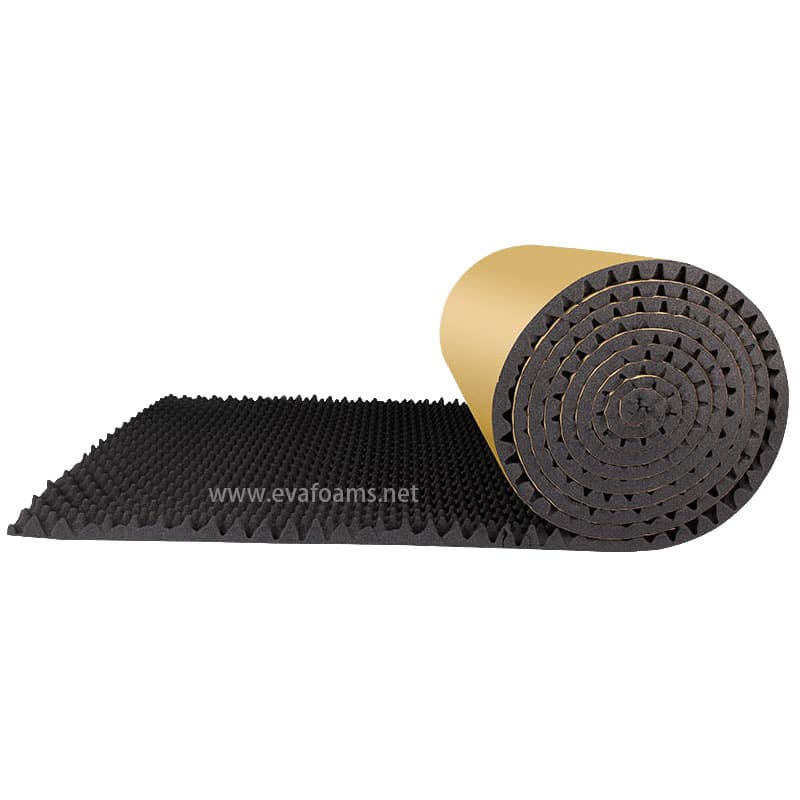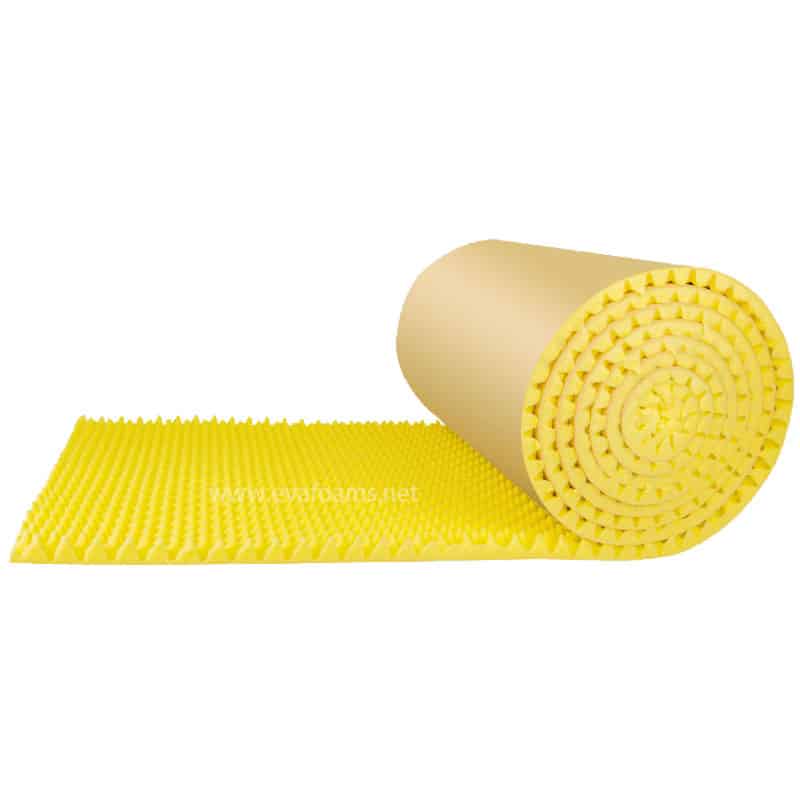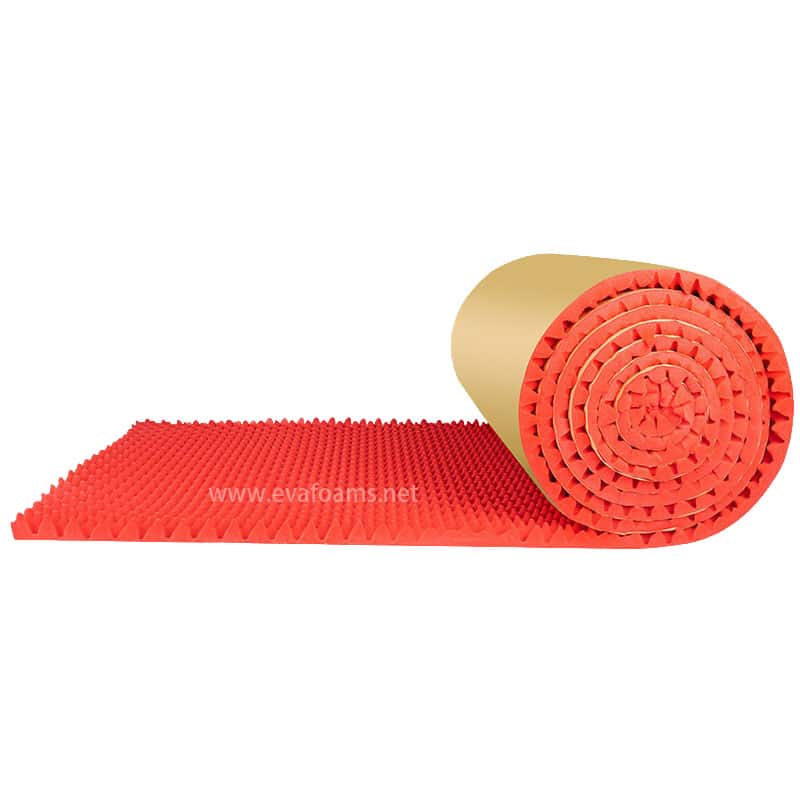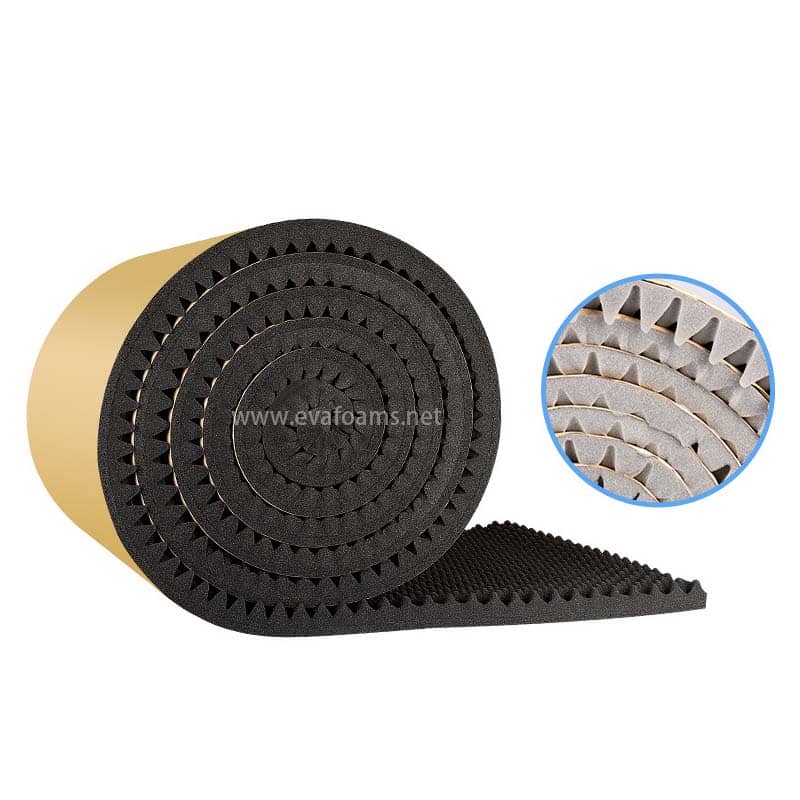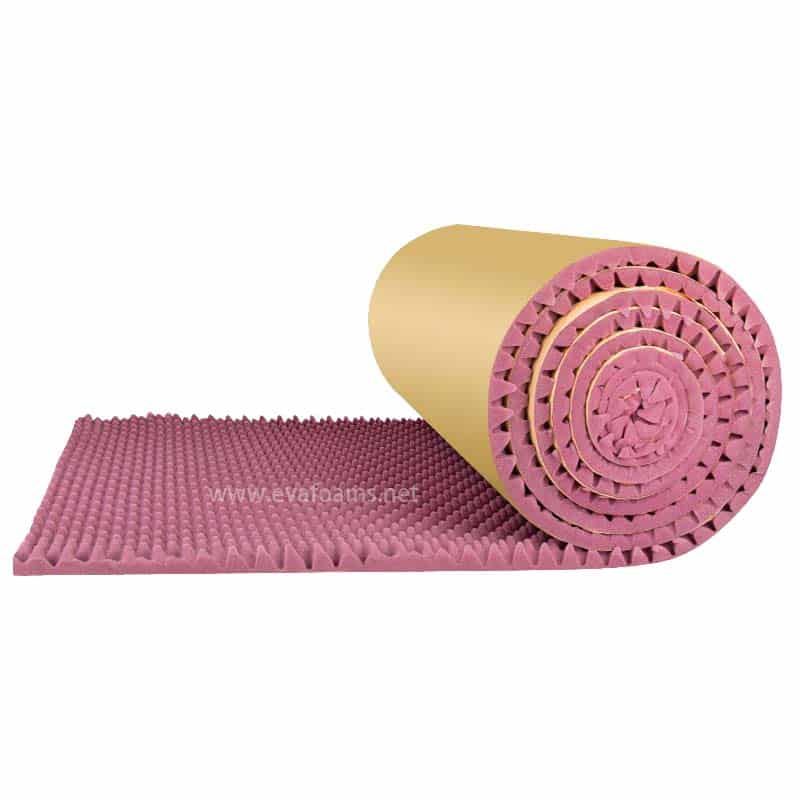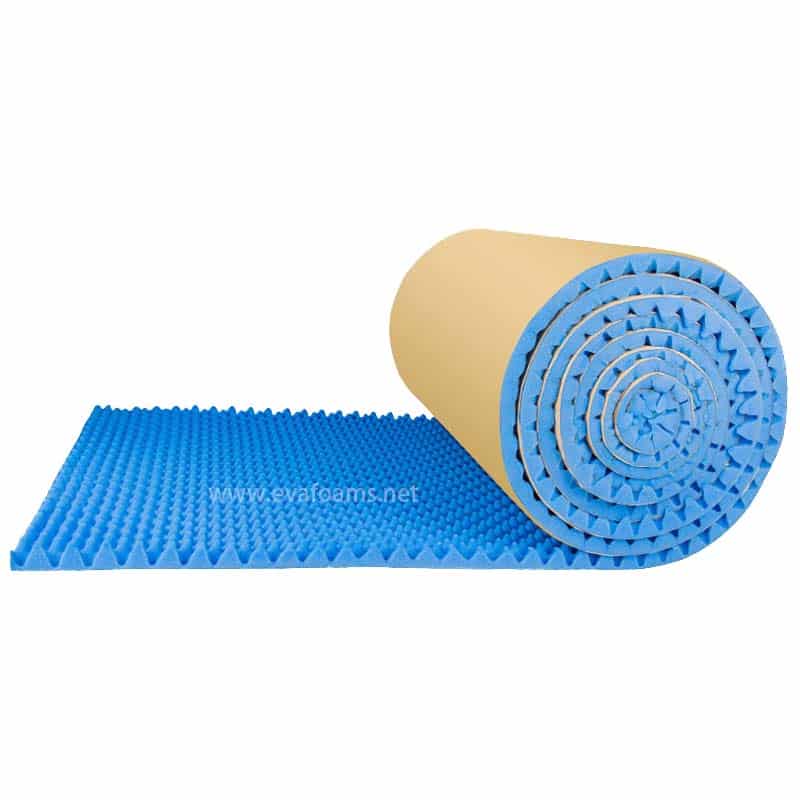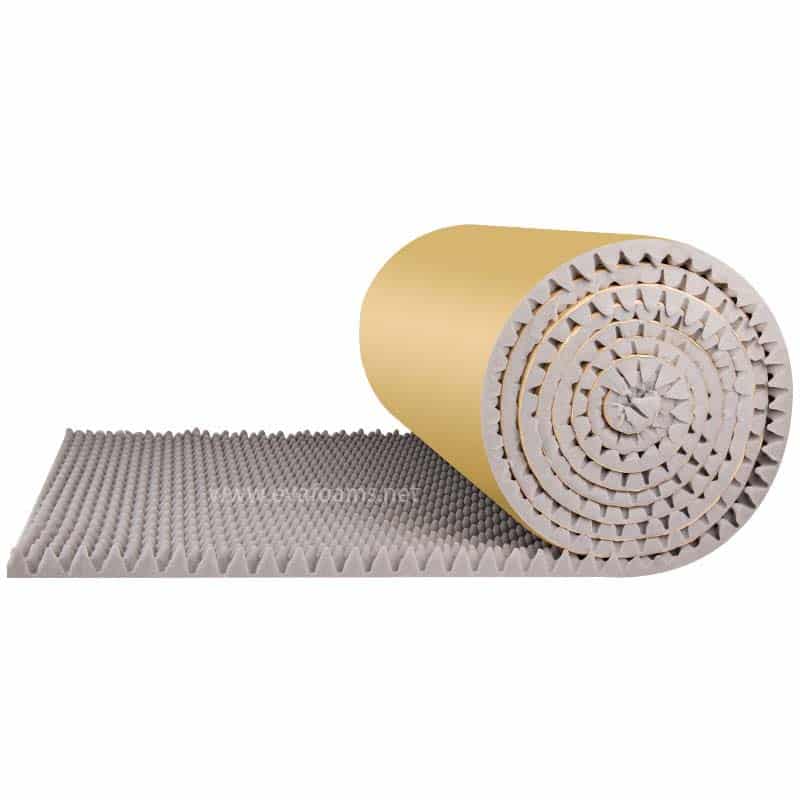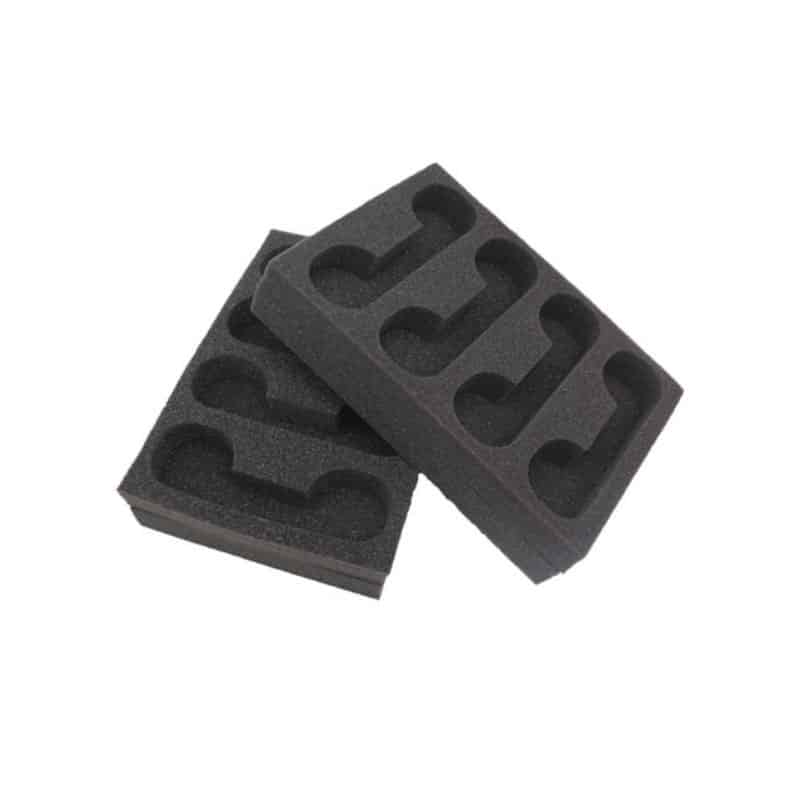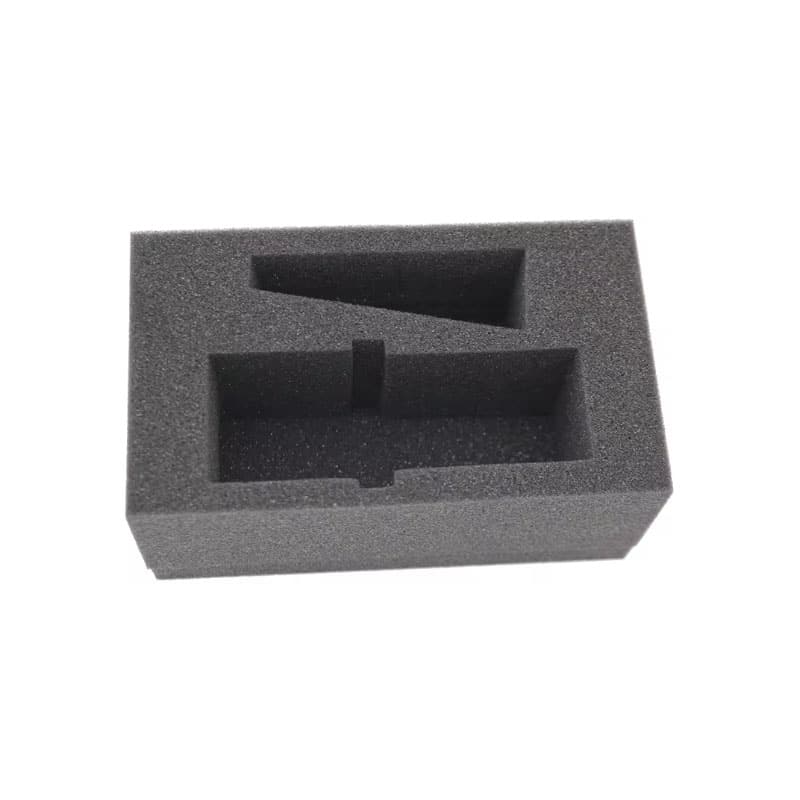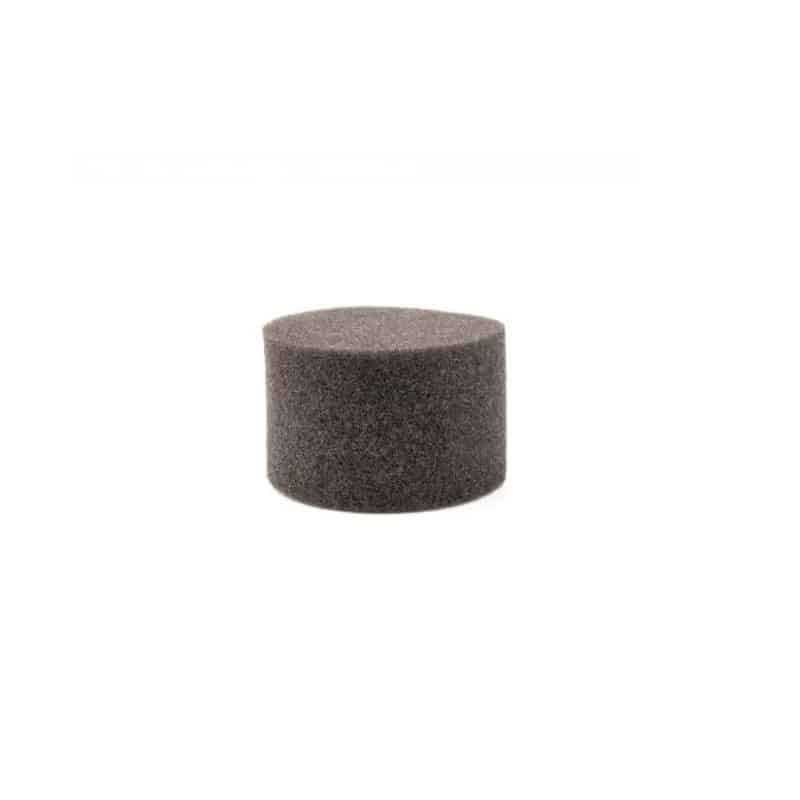Levu Tudei:1 meter x 5/10meter,thickness: 20/30/50/70mm.
Acoustic foam, also known as soundproofing foam or sound-absorbing foam, is a type of material used to reduce noise and control sound reflections in various environments. It is designed to absorb sound energy and reduce echoes, reverberation, and unwanted reflections.
Acoustic foam is typically made from open-cell polyurethane foam, which has excellent sound-absorbing properties. The foam structure helps to trap and dissipate sound waves, converting the sound energy into heat. The open-cell nature of the foam allows sound waves to enter the material and get absorbed rather than bouncing back.
The foam panels are often cut into specific shapes, such as pyramids, wedges, or egg crates, which increase their surface area and improve their sound-absorbing capabilities. These shapes help to break up sound waves and prevent them from bouncing back and forth between surfaces.
Acoustic foam is commonly used in recording studios, home theaters, music practice rooms, offices, and other spaces where sound quality and noise control are important. It can be applied to walls, ceilings, and other surfaces to absorb sound reflections and reduce overall noise levels within a room.
It’s worth noting that while acoustic foam is effective at absorbing high and mid-frequency sounds, it may have limited impact on low-frequency sounds. To address low-frequency noise issues, additional soundproofing techniques such as mass-loaded vinyl, bass traps, or resilient channels may be necessary.
Overall, acoustic foam is a versatile and popular solution for improving the acoustic quality of a space by reducing reverberation and unwanted echoes, creating a more controlled and pleasant sound environment.

